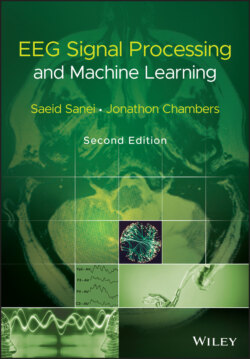Читать книгу EEG Signal Processing and Machine Learning - Saeid Sanei - Страница 60
3.7 Summary
ОглавлениеMost of the models generated mathematically are very primitive representations of EEG generators. More complicated models will be necessary to represent the brain EPs and the abnormal EEGs recorded under various brain diseases and disorders. The model based on phase coupling explained here introduces the WCOs which can be used to model the interactions between the neurons. Hodgkin and Huxley model conversely provides a detailed and accurate model for generation of active potentials. Linear and nonlinear prediction filers can be used in modelling the neuro generators. Gaussian mixtures are capable in modelling the EEG particularly event‐related, evoked, and movement‐related potentials. Finally, circuit models have been introduced to combine the excitatory and inhibitory post‐synaptic potentials for generation of an EEG signal. The synaptic currents have also been modelled using electronic circuits. These circuits can be expanded to have very accurate model of either a single neuron or a membrane. They can also be used to model a large number of neurons for generation of particular brain waveforms. The electronic models have potential to be used in brain morphing technology.
